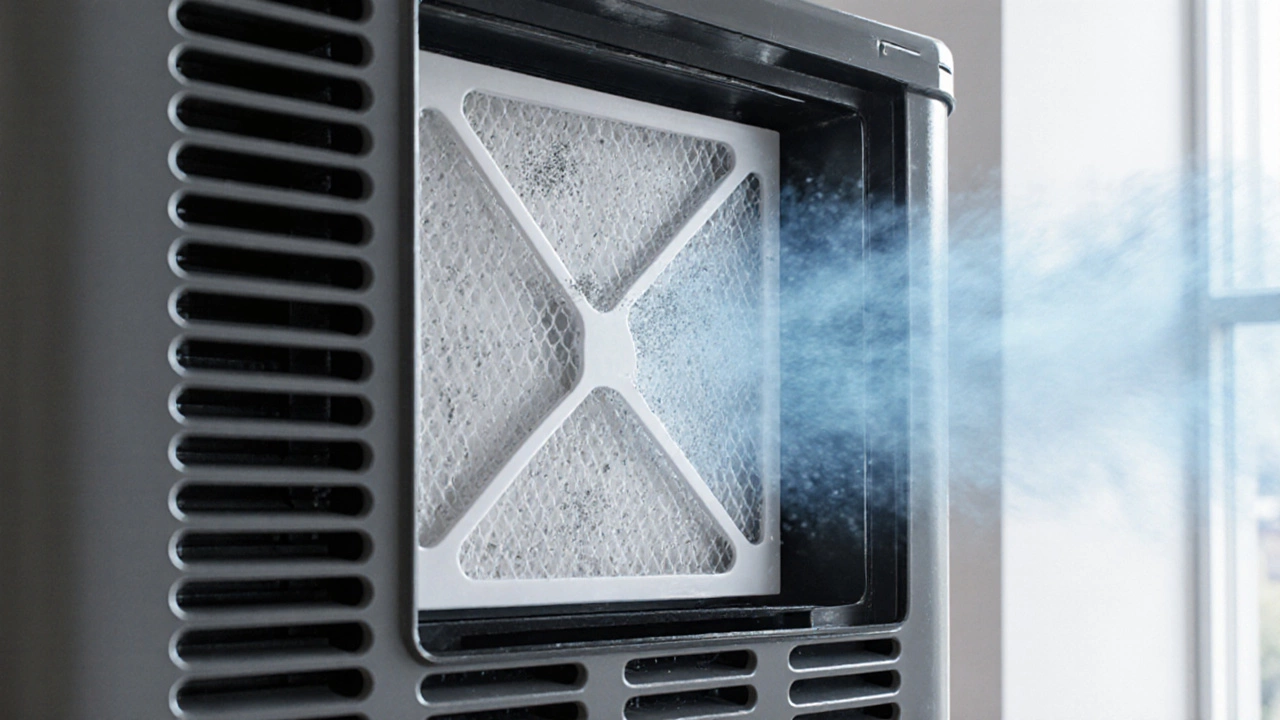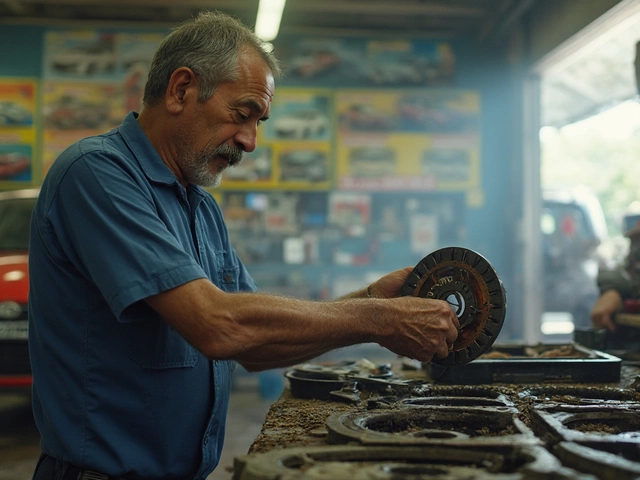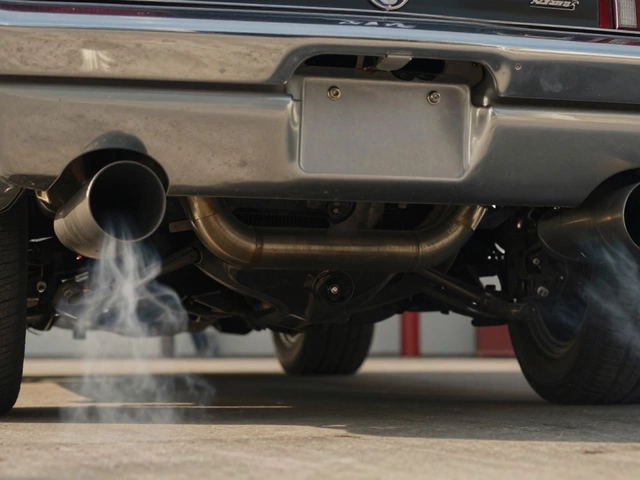Air Filter Compatibility Calculator
When you hear the word "filter," you probably picture a dusty piece of material you replace every few months. But not all filters are created equal - some trap microscopic particles, others simply slow down airflow. If you’re wondering which one actually gives you the cleanest air, you’ve come to the right place.
What an Air Filter Actually Does
At its core, an air filter is a device that removes contaminants from the air as it passes through a fibrous or electrostatic medium. Whether it sits in your HVAC system, your car’s engine bay, or a portable air purifier, the basic principle stays the same: capture particles, let clean air flow onward.
Two key performance numbers help you judge a filter’s worth:
- Capture efficiency - the percentage of particles a filter grabs at a given size (often measured at 0.3 µm, the most penetrating particle size).
- Airflow resistance - how much the filter slows the air, usually expressed as pressure drop (Pa). Too much resistance can strain fans or engines.
Balancing the two is the secret to the most effective air filter for any application.
Major Types of Air Filters
Below are the most common families you’ll encounter. Each one has its own strength, weakness, and ideal setting.
HEPA filter (High‑Efficiency Particulate Air) is a dense mat of randomly arranged fibers that can capture 99.97 % of particles down to 0.3 µm. It’s the gold standard for medical facilities, clean rooms, and high‑end home air purifiers.
Electrostatic filter uses an electrically charged media to attract particles. It can be washable or disposable, and it usually offers lower pressure drop than HEPA, making it popular for HVAC systems where fan power is limited.
Activated carbon filter is packed with porous carbon granules that adsorb gases, odors, and volatile organic compounds (VOCs). It’s often paired with a particle filter to provide both scent control and dust removal.
Cabin air filter sits in a vehicle’s ventilation system. It typically combines a paper or foam pre‑filter with a layer of activated carbon to keep dust and exhaust smells out of the passenger compartment.
Engine air filter protects a car’s engine from abrasive dust. Most are paper‑based, but performance enthusiasts may opt for cotton‑gauze or oiled foam to boost flow.
How to Compare Effectiveness
To figure out which filter type wins in a given scenario, line up three criteria: particle capture, airflow impact, and service life. The table below gives a quick snapshot.
| Filter Type | MERV Rating (or Equivalent) | Capture Efficiency @ 0.3 µm | Typical Lifespan | Best Use Case |
|---|---|---|---|---|
| HEPA | 17‑20 (equivalent) | 99.97 % | 1‑2 years (replace) | Medical, clean rooms, high‑end home purifiers |
| Electrostatic (washable) | 8‑13 | 80‑95 % | 5‑7 years (clean) | Residential HVAC, where low pressure drop matters |
| Activated Carbon | Varies (often combined with 5‑8) | 90 % (gases) | 6‑12 months (replace) | Odor control, smoke‑filled environments |
| Cabin (paper + carbon) | 10‑12 | 85‑95 % | 12‑15 months (replace) | Vehicle interior air quality |
| Engine (paper) | 5‑8 | 70‑85 % | 12‑30 k miles (replace) | Protecting engine from dust |
Notice the trade‑off: the higher the MERV rating (or HEPA equivalence), the better the particle capture, but the pressure drop climbs too. That’s why you’ll rarely see a household HVAC system run a true HEPA filter - the blower would have to work harder, increasing energy use.
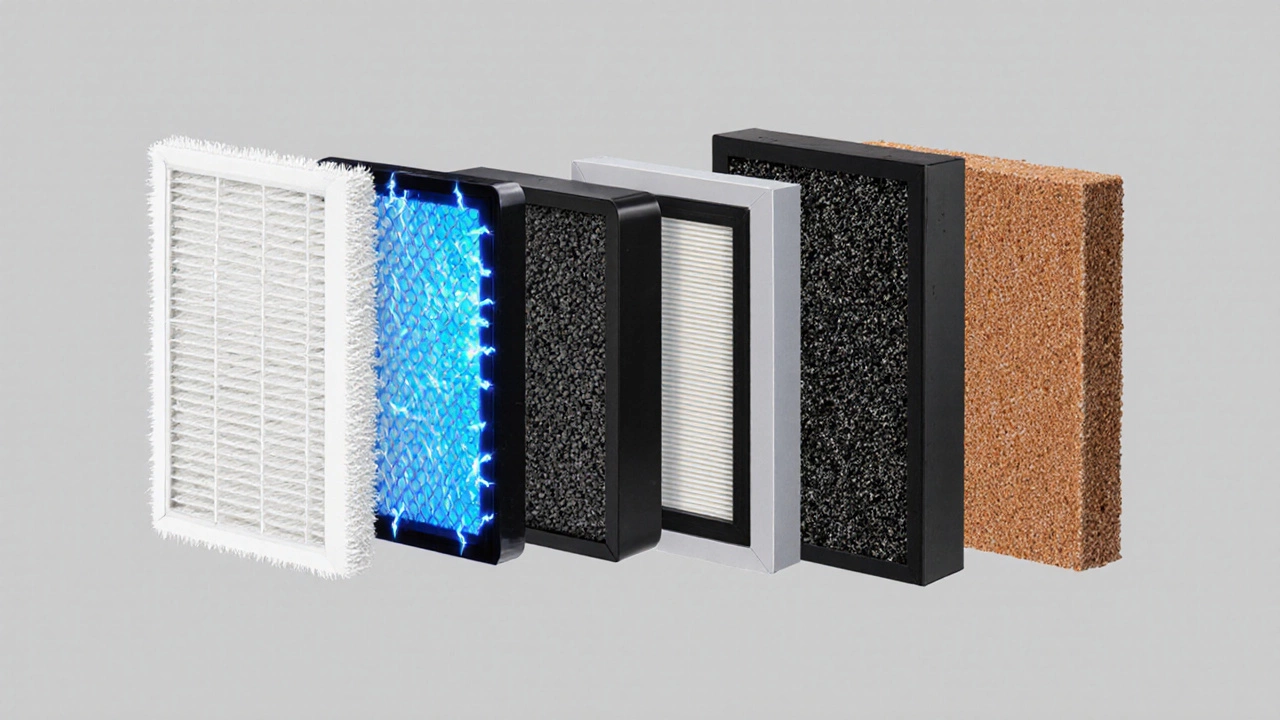
Choosing the Right Filter for Your Situation
Here’s a quick decision flow you can run through in your head:
- What’s the primary threat? If you’re battling dust and pollen, a high‑MERV mechanical filter (MERV 13‑16) usually does the job. If odors, chemicals, or smoke are the concern, add an activated carbon layer.
- How sensitive are you to airflow loss? For homes with older furnaces, stay under MERV 13 to avoid strain. In modern, variable‑speed systems, you can push to MERV 16 without issue.
- Do you need a washable solution? Electrostatic filters wash clean and last years, but they don’t match HEPA’s microscopic capture.
- Is budget a factor? Paper filters are cheap (under $15) but need frequent replacement. Premium HEPA units cost $150‑$300 upfront, but they replace less often if paired with a good pre‑filter.
By answering these four questions, you’ll land on the filter that balances clean air, energy use, and cost.
Maintenance Tips That Keep Performance High
Even the best filter loses its edge the moment it clogs. Follow these simple habits:
- Check the filter monthly. A visual inspection can reveal dust buildup early.
- Replace or clean according to the manufacturer’s schedule. For disposable paper, that’s usually every 3 months in a typical home. For washable electrostatic media, rinse with lukewarm water and let dry fully before reinstalling.
- Swap for a higher‑MERV pre‑filter. Adding a cheap MERV 8 filter upstream of a high‑efficiency unit reduces load and extends life.
- Seal any gaps. Air will bypass a filter if the housing isn’t sealed, making the whole effort pointless.
These steps keep the pressure drop low and the capture rate high throughout the filter’s life.
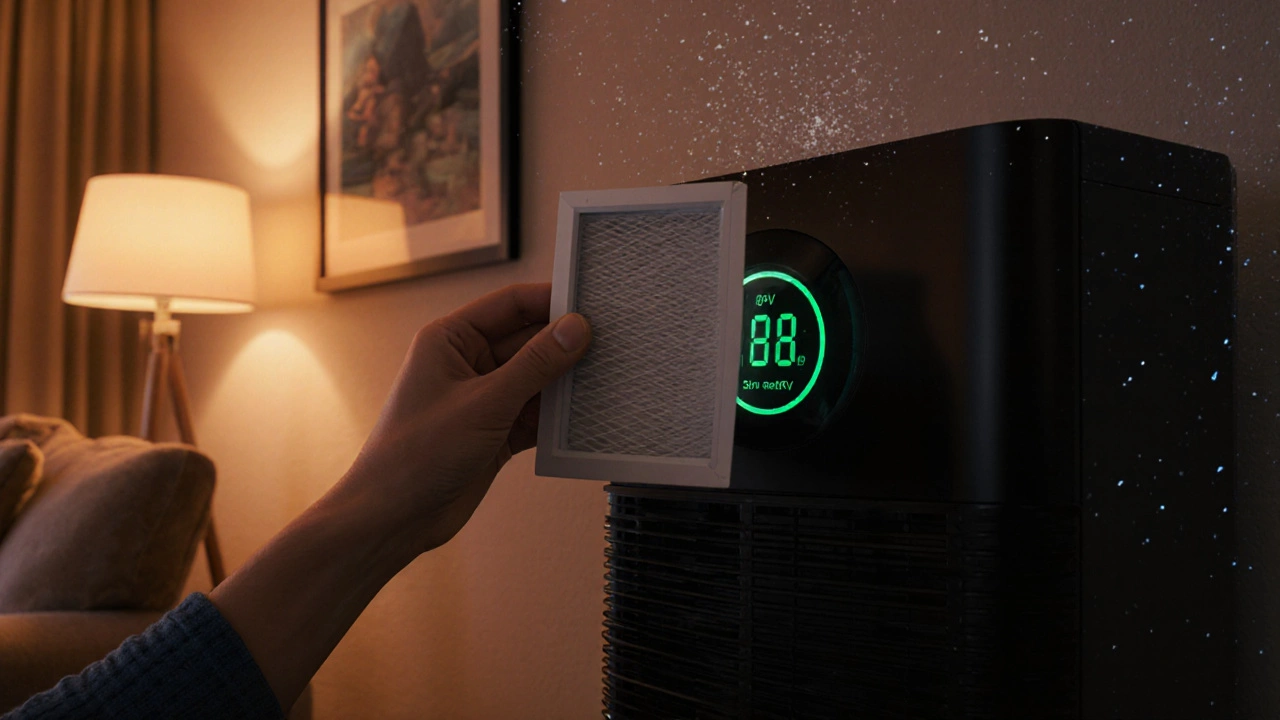
Common Misconceptions About Air Filters
Let’s bust a few myths that often lead buyers astray.
- Myth: “All HEPA filters are the same.” In reality, true HEPA must meet a 99.97 % capture at 0.3 µm. Some products marketed as “HEPA‑type” only achieve 80‑90 %.
- Myth: “Washable filters are always cheaper.” If you forget to clean them, performance plummets, forcing you to replace sooner or run your system inefficiently.
- Myth: “Higher MERV means better for every system.” A too‑dense filter can reduce airflow, causing short‑cycling in furnaces and increasing utility bills.
Understanding the nuances helps you avoid overpaying for a filter that won’t work in your setup.
Quick Decision Checklist
- Identify primary contaminant (dust, pollen, smoke, VOCs).
- Check HVAC or engine specifications for maximum allowable pressure drop.
- Choose filter type that meets both capture efficiency and airflow limits.
- Set a realistic replacement or cleaning schedule.
If you tick all these boxes, you’re on the path to cleaner breathing and smoother system operation.
Frequently Asked Questions
What does MERV stand for and why does it matter?
MERV stands for Minimum Efficiency Reporting Value. It rates a filter’s ability to capture particles of different sizes. Higher MERV numbers mean finer particles are trapped, but they also increase resistance to airflow.
Can I use a HEPA filter in my home’s HVAC system?
Only if your furnace or air handler can handle the extra pressure drop. Many modern systems with variable‑speed fans can, but older units may overheat or short‑cycle.
How often should I replace my cabin air filter?
A good rule of thumb is every 12‑15 months, or sooner if you drive in dusty or smoky conditions.
Do washable electrostatic filters lose efficiency over time?
Yes. Dust embeds in the fibers and reduces capture rates. Regular cleaning restores most of the performance, but after a few years the media may need replacement.
What’s the difference between PM2.5 and MERV ratings?
PM2.5 refers to particles 2.5 micrometers or smaller - a health‑related metric. MERV rates a filter’s ability to capture particles across several size ranges, including PM2.5.
Armed with the right facts, you can choose the filter that truly cleans the air you breathe without hurting your system’s performance.
